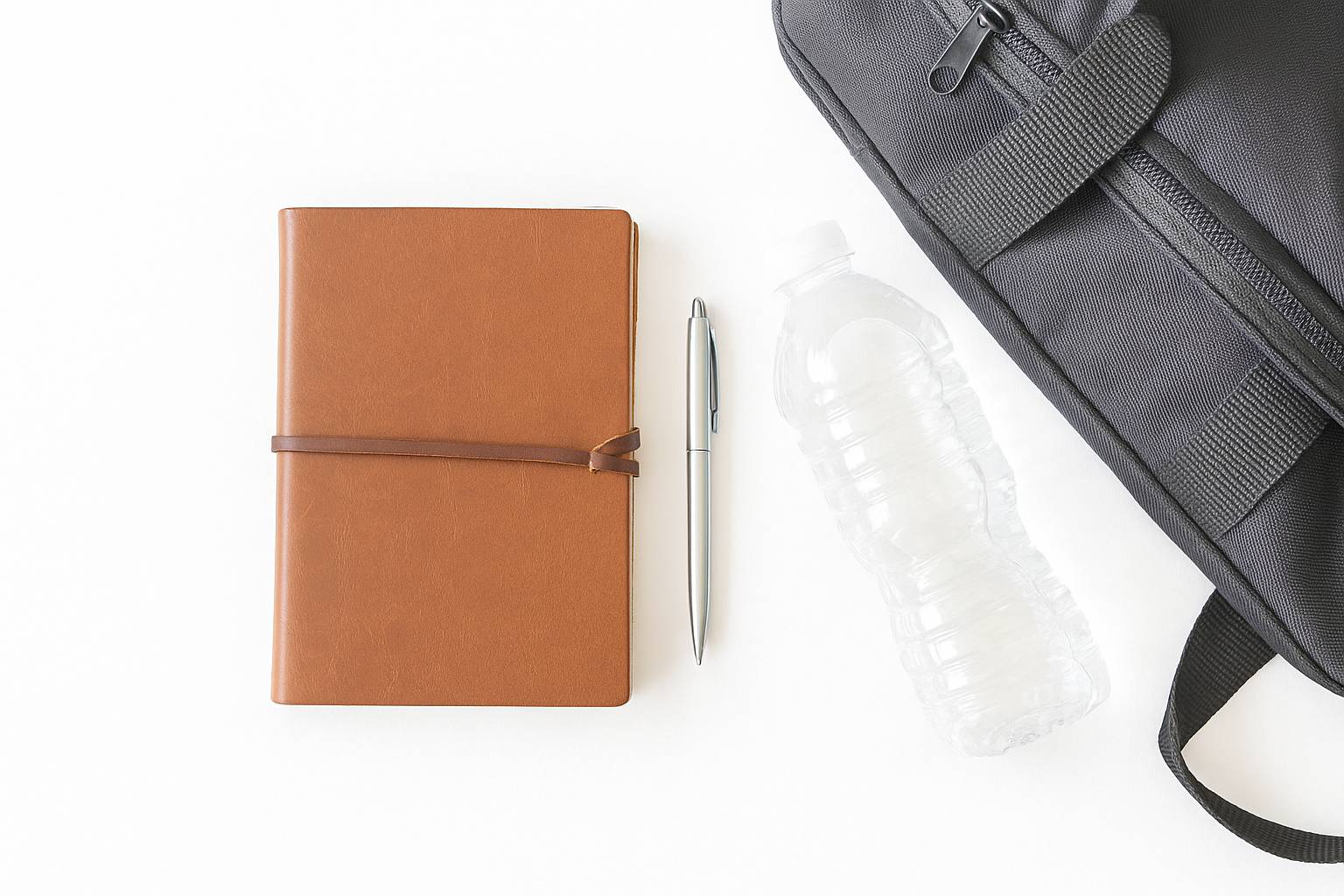The Ultimate BJJ Training Journal: Track Techniques, Sparring & Progress

Could a bjj training journal be the single tool that turns random drilling into steady belt progress? If you're tired of forgetting techniques, rolling aimlessly, or plateauing, this guide shows how a simple log - with space for technique sketches, rolling goals, performance ratings, and session reflections - speeds improvement.
Read on to learn how to keep focused rolling, log partner notes and outcomes, build a searchable technique list, and use simple ratings to spot trends. By the end you'll know what to write after class, how to review entries to accelerate belt progress, and which journal features actually matter. Use this practical, step-by-step approach to make every session count. Start tracking today and watch your jiu-jitsu improve faster than you expect.
Why keep a BJJ training journal?
A focused bjj training journal helps you retain techniques, set purposeful rolling goals, reflect on performance, and replicate what works — accelerating belt progression.
How journals lock in technique
Justice BJJ’s spiral A5 journal provides faint dotted lines and 9 lines per technique so you can write and sketch moves until details are permanent. Writing and drawing immediately after drilling cements neural pathways; a dedicated technique block prevents forgotten details and speeds up review between classes.
Set and measure rolling goals
Use templates that let you list up to 4 rolling goals with checkboxes (Justice BJJ). Checkboxes convert vague intentions into session-focused actions, so you roll with purpose instead of drifting. BJJ Fanatics’ digital journal includes session-goal tracking and a sparring log to track partners and outcomes, helping you spot patterns in live sparring.
Reflect, rate, and replicate
Built-in reflection prompts and a 1–10 performance rating (Justice BJJ) let you identify high-performing days and repeat the behaviors that produced them. Track what worked, what failed, and which partners exposed gaps — then plan the next session to attack those weak points.
Track attendance and sessions
Justice BJJ offers a class attendance calendar and two pages per session (120 pages ≈ 60 sessions) so you can see volume and consistency at a glance. Consistent logging reveals whether technique gaps are from volume, timing, or partner selection.
Physical vs. digital: choose what fits
Thousands of options exist (Amazon shows 2,000+ journal results) from simple notebooks to guided diaries and digital tools. The BJJ Fanatics digital journal, crafted with input from Bernardo Faria, blends mind-mapping, detailed notes, and sparring logs — an instructor-driven template for systematic progress.
Bottom line: a well-designed bjj training journal — physical or digital — turns practice into measurable progress by capturing techniques, enforcing session goals, prompting reflection, and tracking attendance.
Choosing the right BJJ training journal — physical vs digital and what features to prioritize
With dozens of formats and price points available, pick a journal that matches your training habits, whether you prefer a compact spiral notebook for the gym or a digital tool with mind-mapping and analytics. Prioritize features that directly support technique retention, rolled practice and reflective review.
Physical vs. digital: core differences
Physical journals (example: Justice BJJ) are A5 compact (5.8 x 8.3 in) so they fit in a gym bag, spiral-bound to lie flat, with premium white paper and faint dotted lines for sketches. Justice BJJ provides two pages per session and 120 pages total — roughly 60 sessions, a handy lifespan estimate.
Digital options (example: BJJ Fanatics) add mind-mapping space, structured training fields (instructor name, reps, duration, areas for improvement), a sparring log for partners and outcomes, and downloadable/streaming access.
Key physical features to prioritize
- Size & binding: A5 + spiral = portable and easy to write on during or after class.
- Paper & layout: premium white paper and faint dotted lines support sketches and clear notes.
- Session structure: two pages per session, checkboxes for rolling goals, 1–10 performance rating, blank "List of Techniques" pages and a class attendance calendar.
When to pick which format
Portability & quick entries: choose a spiral A5 physical journal for the gym. Analysis & visualization: favor digital mind-maps and indexed logs when you want analytics and backups. Hybrid: use a physical journal at class and digitize weekly reviews for long-term tracking.
Actionable selection checklist
- Do you want sketches and diagrams? Choose dotted/blank pages and spiral-bound.
- Do you want analytics, backups or guided prompts? Consider a digital journal like BJJ Fanatics.
- How many sessions should it hold? Pick page count accordingly (e.g., 120 pages ≈ 60 sessions).
- Look for built-in fields: session goals, sparring log, performance rating, technique index and attendance calendar.
Market note: guided paper journals range from about $4.20–$7.99 on Amazon, while premium editions can exceed $29. Use these price points to match budget and features when choosing a bjj training journal.
How to use a BJJ training journal to accelerate progress — templates, routines and review habits
A journal is only powerful when used consistently and reviewed systematically. A good bjj training journal turns scattered notes into repeatable habits: simple templates for each session, rolling goals, measurable practice details, and weekly/monthly review habits convert time on the mat into faster belt progression.
Session template — what to record
Use a consistent session template every time. Include:
- Instructor name
- Techniques learned (space for step-by-step notes plus room for sketches)
- Number of repetitions and duration of practice
- Up to 4 rolling goals with checkboxes to keep rounds focused
- Sparring log fields: training partners, outcomes, adjustments
- Performance rating (1–10) to spot high-performing days and trends
Use visualization and mind-mapping
Instead of only listing moves, use a mind-mapping area (as in the BJJ Fanatics journal) to connect techniques, plan chains and build strategy. Map common entries, escape options and transitions so you train sequences, not isolated moves.
Daily routine to follow
Follow this simple, repeatable session routine:
- Pre-class goals: pick 1–2 techniques and set up to 4 rolling goals
- In-class notes: record technique steps, add a quick sketch, log reps/duration
- Post-class reflection: what worked, what to drill next
- Sparring log: partners, outcomes, key adjustments
- Weekly review: transfer best drills into a focused practice plan
Track consistency and lifespan
A 120-page guided journal covers roughly 60 sessions. Use a class attendance calendar to tally monthly classes and correlate volume with progress. Archive monthly or quarterly and keep a running "List of Techniques" index for quick lookup.
Measure success
Track tangible metrics: belt progression milestones obviously, percent of sessions where goals were met, and average performance rating over time to quantify improvement.
A focused bjj training journal turns repetition into measurable progress. It helps you lock in techniques by writing and sketching right after drills, set specific rolling goals with checkboxes, rate sessions, and track attendance so you can see volume and consistency.
Choose the format that fits your routine: a compact spiral A5 journal for quick gym notes or a digital journal with mind-maps and analytics for deeper review. Use a simple session template—teacher, technique steps, reps, 1–4 rolling goals, sparring log and a 1–10 rating—and follow a daily routine of pre-class goals, in-class notes, post-class reflection and weekly review.
Over time, this habit reveals patterns, highlights high-performing days, and shortens the path to promotions. Try a 30/60/90-day plan, pick a journal, and start logging. What will you discover when you track your training—and how quickly could your game improve?
